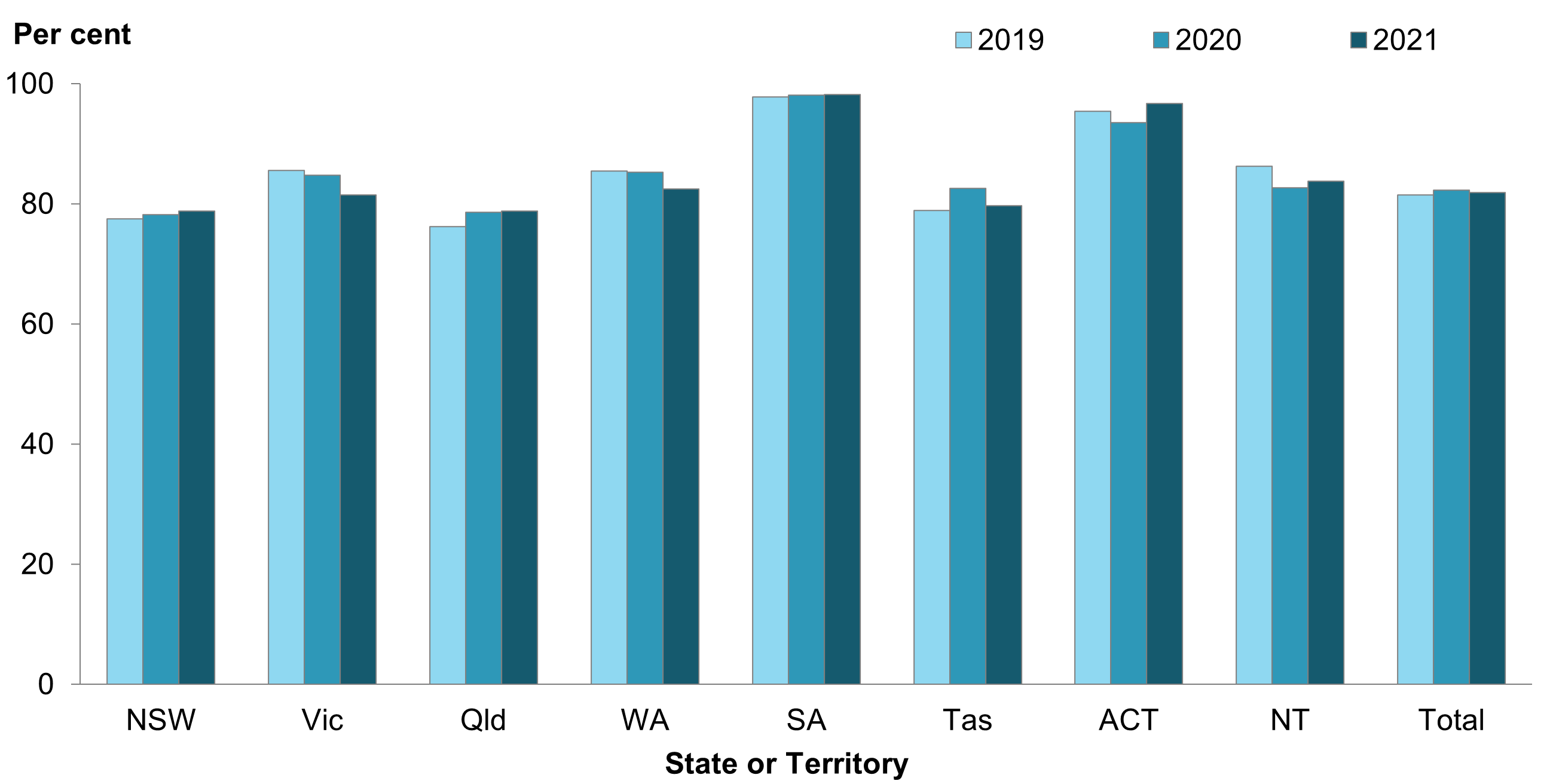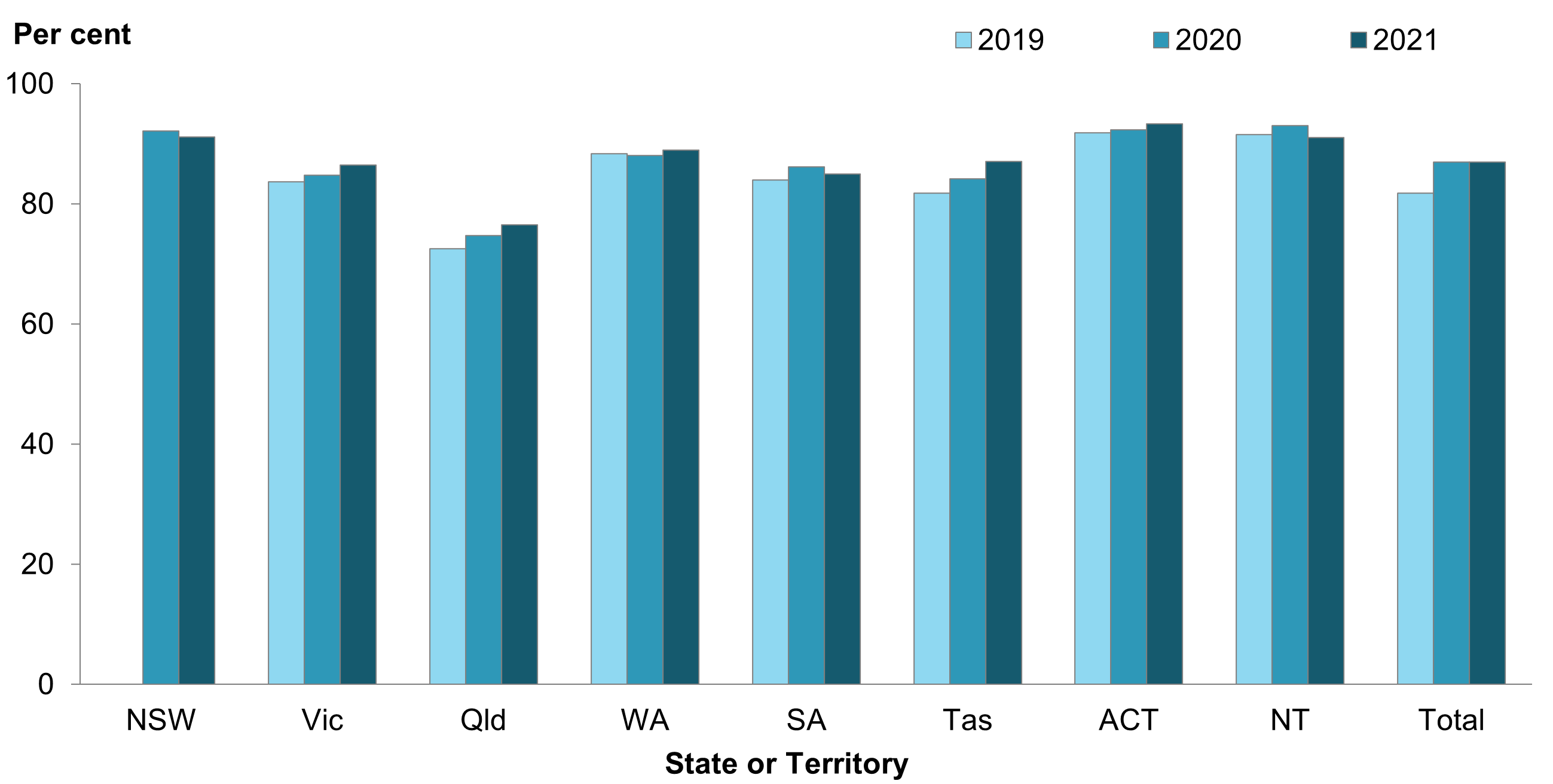Stability for children in out-of-home care
The stability of a child’s living situation can be assessed by their continuous time spent in out-of-home care and the number of placements they experienced. Long-term care arrangements provide stability of placement, relationships, and legal circumstance for children in care. State and territory policies relating to permanency planning suggest that children who have been in care for two or more years require a decision to be made regarding their long-term care arrangements (AIHW 2016).
Stability for children in care encompasses multiple dimensions, including legal stability – the type of order they are on – and placement stability – the number of placements they have experienced.
Legal stability for children in out-of-home care for 2 years or more
Indicator 1.7a measures the proportion of children aged 2–17 in out-of-home care for 2 or more years at 30 June who were on long-term guardianship orders.
As at 30 June 2021:
- 82% of the 31,400 children who had been in out-of-home care for 2 or more years were on long-term guardianship orders (Table S1.7a).
- The proportion of children who were on long-term guardianship orders ranged from 79% in New South Wales and Queensland to 98% in South Australia (Figure 5).
- Nationally, 11,100 (82%) of the 13,500 Indigenous children who had been in out-of-home care for 2 or more years at 30 June 2021 were on long-term guardianship orders (Table S1.7a).
Figure 5: Children aged 2–17 in out-of-home care for 2 or more years, and on long-term guardianship orders at 30 June, by state and territory, 2019 to 2021 (per cent) (Indicator 1.7a)

Chart: AIHW. Source: AIHW Child Protection Collection 2021 Table S1.7a
Placement stability for children in out-of-home care for 2 years or more
Indicator 1.7b measures the proportion of children aged 2–17 in out-of-home care for 2 years or more at 30 June of the reporting period who experienced less than 3 placements in the 2 years prior.
At 30 June 2021:
- Of the 31,400 children who were in out-of-home care for 2 or more years, 87% had less than 3 placements in the last 2 years (tables S1.7b(i) and S1.7b(ii)).
- The proportion of children who were in out-of-home care for 2 or more years with less than 3 placements in the last 2 years ranged from 77% in Queensland to 93% in the Australian Capital Territory (Figure 6).
- Nationally, 11,600 (86%) of the 13,500 Indigenous children who were in out-of-home care for 2 or more years had been in less than 3 placements in the last 2 years (Table S1.7b(i)).
Figure 6: Children aged 2–17 in out-of-home care for 2 or more years at 30 June with less than 3 placements in the last 2 years, by state and territory, 2019 to 2021, (per cent) (Indicator 1.7b)

Note: Data for New South Wales are not available for 2019
Chart: AIHW. Source: AIHW Child Protection Collection 2021, Table S1.7b(i)
References
AIHW (Australian Institute of Health and Welfare) (2016) Permanency planning in child protection, AIHW, Australian Government, accessed 9 August 2022.


